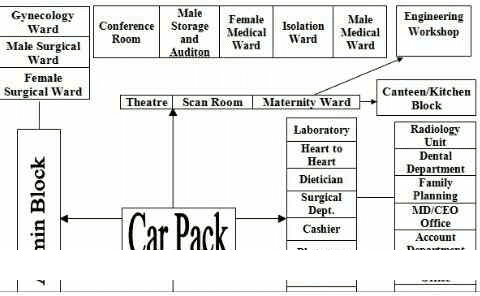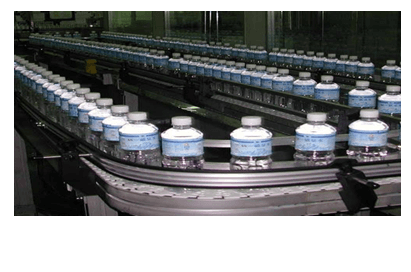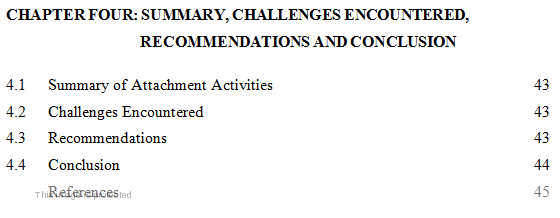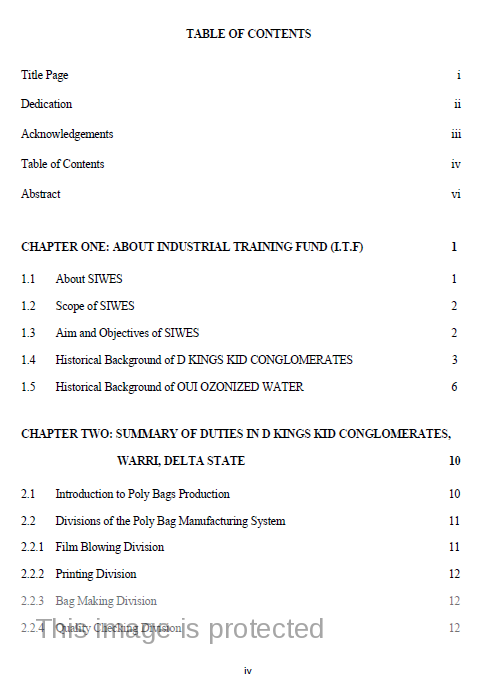
Do you want to learn the proper way and steps in writing your industrial training/SIWES report?
Since I started this blog, I’ve received countless messages through email, WhatsApp, and my blog from industrial training students, who want to learn and know the proper way in writing a good and presentable report, but do not know how to go about it.
Some of you guys don’t have time on your side, as your report submission and presentation is around the corner.
Also, others weren’t given any orientation by their schools, and few actually didn’t undergo the training.
And now, you have been asked by your department to write and present reports.
Each time I receive such messages, I try to reply as soon as possible to prevent and possibly reduce the failure rate in this programme.
That’s why I feel it’s my duty to you, my readers, to aid you in understanding this subject, because I want you to succeed and to succeed as well as possible.
In this article, students of Accounting, Agriculture, Architecture, Biochemistry, Chemistry, Computer Science, Business Administration, Engineering, Microbiology, Food Science and Technology, Nutrition and Dietetics, Office Technology and Management, Mass Communication etc. will easily learn how to write A-Grade SIWES report.

The SIWES Report , also known as Industrial Training or Internship Report , is an overall documentation of experiences gained, activities, topics, projects, jobs carried out by internship students at their workplace during the industrial training period.
This report is usually type-written using MS Word, printed, binded and is to be submitted by the students to their school lecturers/supervisors or department at the end of their training for review, presentation and grading.
The report should give succinct details of all work-related activities that took place in the place of industrial attachment.
It should be written in such a way that a layperson or one who hasn’t been to the workplace would easily and clearly understand the activities, projects, jobs carried out and products produced by the firm.
Also, the report should be free of grammatical blunders.
Here is the format for SIWES report writing using Microsoft Word:
The SIWES/I.T report is usually divided into three (3) main parts, namely:
(1) Preliminary Pages
Note: The preliminary pages are numbered in Roman Numerals (i, ii, iii, iv etc.) at the bottom of each page.
(2) Report Body (Chapters)
(3) References
Preliminary Pages
1. Title Page

The title page gives a brief introduction and shows the purpose of the report.
You’ll have to include:
The date to include can be the month and year you’re to submit your report to your department for grading or do your defense/presentation.
It can also be the duration of your training, i.e. when you began and ended your training. e.g. 06/01/2024 – 25/06/2024.
The font size for the title page is 14 and in bold capital letters throughout.
2. Dedication

The dedication page is mostly for appreciation and thanks to your creator, parents, guardians, sponsors etc.
3. Acknowledgements

On this page, show gratitude to some or all of those who contributed to the success of your training.
4. Table of Contents


The Table of Contents should show the orderly and sequential arrangement of the aforementioned pages, including the activities, projects carried out by you at your workplace.
This page enables a reader to easily know and find the exact pages of a particular topic or activity of interest without having to read the entire report.
5. Abstract

Summary of the report.
Don’t give paragraphs when writing the report abstract, because it is usually jam-packed, as you can see in the picture above.
The length should also be 1/2 (half) or 3/4 (three-quarter) of the page you’ll be writing it on.
Use single line spacing (i.e. 1) for the abstract.
Report Body
The body of the SIWES report is usually divided into four (4) chapters, although you can have up to 5 or more chapters.
But, it’s always advisable to make your report brief, except you’ve a lot to write about.
You’re not actually writing a textbook.
In short, your lecturers/supervisors may not have the time to read the complete report.
They will probably scan through important parts/pages of your report looking for errors, mistakes or interesting facts (activities).
Sometimes, “Quality over Quantity”
The manner and approach you’ll use in writing your report usually depends on the firm you work with, departments you worked in, and activities carried out by you.
For example, the way a SIWES report of an I.T student who worked in a medical laboratory is written, differs sometimes from the report of those who worked in fast food, bakeries, construction sites, farms, etc.
1. Chapter One

In this chapter, you’ll have to write on:
Meanwhile, the Organizational Chart is simply a diagram showing the positions of workers/departments or flow of power in the firm from maybe the top (manager, director, CEO) to the bottom (drivers, cleaners etc.).

2. Chapter Two

In this chapter, you can write on:
Note: Don’t include images of the equipment’s used, instead list them out orderly and state their various uses.
3. Chapter Three

In this chapter, it is expected that the activities carried out during training under various section(s) are discussed here in order of priorities and logically.
It may be numbered as 3.1, 3.2, 3.3…..
Another level, e.g. 3.1.1, 3.1.2, 3.1.3, 3.2.1, 3.2.2, 3.3.3… may be added where 3.1 and 3.2 have other subheadings.
You can discuss tests, projects, production, quality control, machines applications, sewing, repairs/maintenance, construction, crafts/design, web/software development, fish farming, etc.
In this chapter, you can also choose to include some pictures of the equipment’s, tools, machines, devices, materials used in the various section(s) you worked in.
The pictures can be black and white, coloured or both.
You can also include flowchart diagrams, e.g. If you worked in a bottled/sachet water production factory, you may choose to include diagrams showing the steps involved in water production, treatment, purification, packaging, etc.
You can equally include images of the finished product (i.e. bottled/sachet water).
If you also worked in a bakery, you can also include pictures showing the steps involved in bread production (from dough mixing to final packaging of the sliced/loaves of bread in nylons).
You can equally choose to include pictures of you alone or with other students/workers while carrying out some activities in the various sections of the company. Although, this isn’t really that necessary.
Note : Pictures shouldn’t be that much. Just a few necessary ones are enough.
Any picture or diagram included in the report must bear a title/description just like the one below.

4. Chapter Four

This chapter should contain the:
References

This should come at the end of your report writing.
You can’t say that you actually wrote your SIWES report by yourself without making use of the internet, textbooks, materials, your workplace handbooks/manuals or copy and pasting.
This section is where all sources referred in writing are listed.
Referencing is also known as a bibliographic listing of information sources cited or consulted at the end of every research. You must give credits where due.
The references must be arranged in alphabetical order.
All citations must be consistent, reflected in the references section, and must conform to standard scientific format.
The references above are based on/related to report i.e. training undergo in a Poultry Farm.
Your report can’t be about laboratory tests and you’ll now be having reference sources and articles of water or bread production. It makes little sense. It has to be related.
If you undergo your training in two different companies, you can choose to write just one or two different SIWES reports.
But, I’ll recommend you write only one report, i.e. merge both together.
Below is the Table of Contents for six months training (report) undergo in two different companies (D Kings Kid Conglomerates and OUI Ozonized Water).


I’ve received so many questions from students as to how many pages their SIWES report should be.
Well, there’s no exact page number for the SIWES report.
But, by using the format outlined on this blog, not less than 20 pages are okay.
That means 20 – 60 pages are perfect for the SIWES report writing.
Your school, department or lecturers (supervisors) may instruct and give you a specific page limit to use in your report writing.
For instance, you may be told that your report shouldn’t be less than 40 pages.
If so, obey and abide by your lecturer or supervisor rule.
Your lecturer or supervisor can also order you to increase the report font size to 13 or above instead of 12 (the standard font size).
This can be due to eye defects or choice.
If so, also obey and abide by your lecturer (supervisor) rule.
First, printing is within the range of ₦ 10 – ₦30 in most cyber cafes and business centres in Nigeria.
That means, if your report is 30 pages and you print at ₦ 10 per page…
i.e. 30 pages X ₦10 = ₦300
If you should include report binding, which is usually ₦100 – ₦300 ,
Let’s say you bind your report at ₦ 100 .
Then, you’ll likely be spending ₦ 400 ( i.e. ₦100 + ₦ 300 ) in printing out just one report copy.
You may decide to print out two report copies. One for yourself and the other copy you’ll submit to your school, department, or lecturer (supervisor).
You may also decide to print and have only one report copy, which will be the one for submission.
Maybe you don’t have or want to waste money or probably you see no reason and usefulness of getting additional report copy.
To write a Student Industrial Work Experience Scheme (SIWES) report, follow these steps:
Keep in mind that your SIWES report should be well-written and easy to read.
Be sure to proofread your report carefully and use clear and concise language throughout.
Follow any specific guidelines provided by your school or institution for writing a SIWES report.
Are you encountering difficulties in your report writing?
Do you need quality SIWES report samples?
Get Quality Report Samples ⇒ HERE